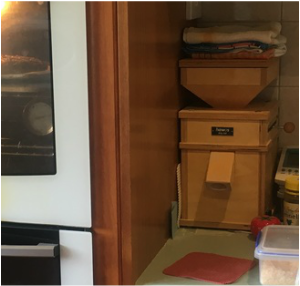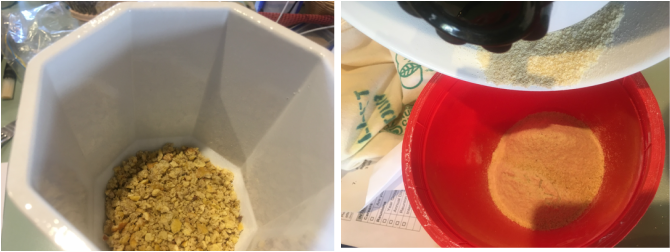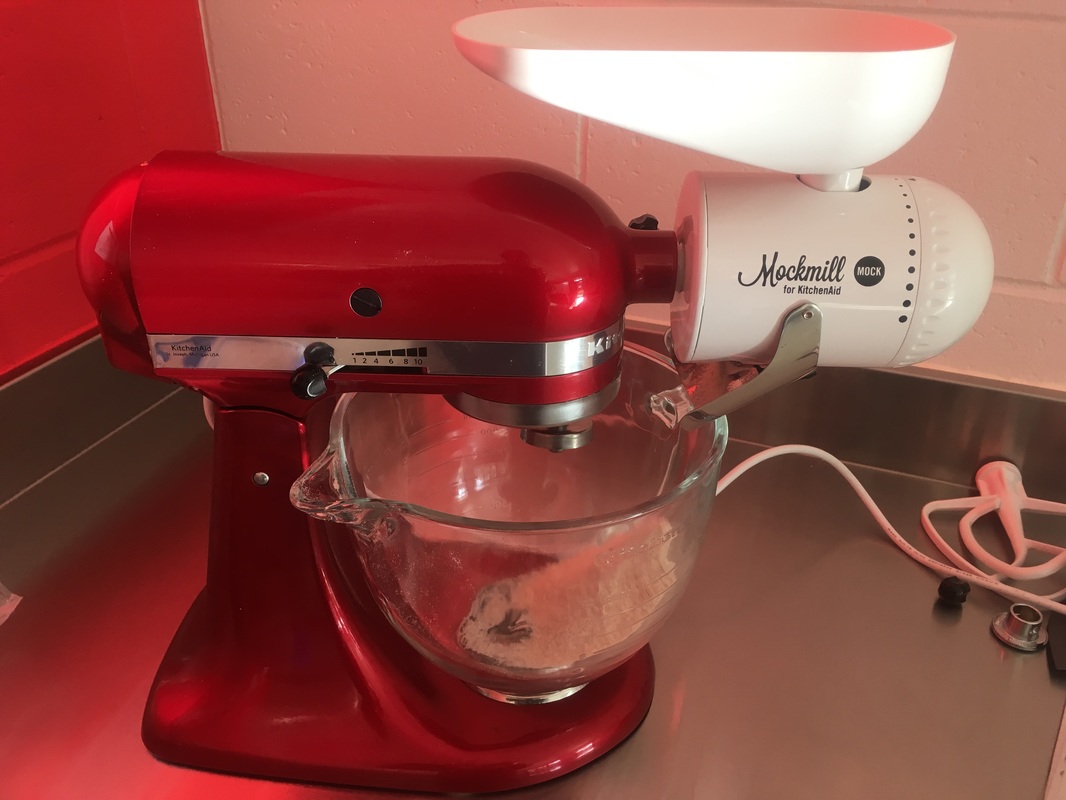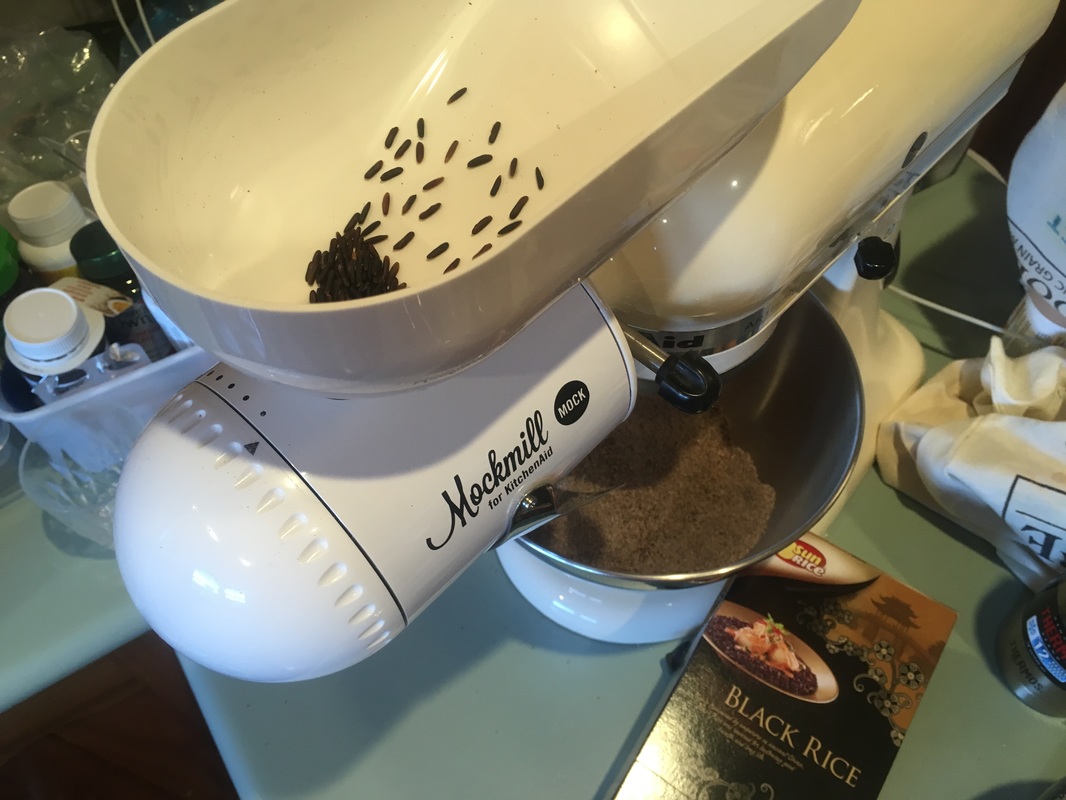Well, really they weren't OK. They worked because they included gums, and they were only mixes of starches, and there was no real flavour. Of course there was little of nutritional value. It meant that I had to add 'body' to the dough to make tasty bread. Gradually I found sources of gluten free flours like buckwheat, millet, brown rice, quinoa, sorghum and amaranth. Teff was not available in those days. Every now and then I would find something new, but there was always a nagging question about how fresh the flour was; sometimes I suspected
 Hawos Billy 100
Hawos Billy 100 Flour mills were not cheap, even a hand mill from the local whole foods store was about $375. Eventually I settled on the Hawos Billy 100, and bought one from 'Skippy Mills', the Australian distributor. At around $6/kilogram for brown rice flour compared with $2.50/kilogram for brown rice I treated my Billy as both a long term investment and a means of producing fresh flour when I needed it. That was about 6 years ago, and Billy still has his place in the bakery corner of the kitchen.
One of the early general principles I worked out for gluten free baking is: the finer the flour, the better the product. This is implicit in commercial GF flour mixes: fine starches and flour, with the assistance of gums produce look-alike products that appear to work. After a few years of milling with Billy I began to look into how to make finer flour. Eventually Billy was joined by a hand mill (Survival Mill) for testing out ideas, and the occasional workout! The hand mill is used for testing out ideas like 'tempering' seed before it is milled, and milling unfamiliar types of seed to learn about it, before I try the seed in Billy. The hand mill can be stripped down to individual components to clean it after each experiment.
It is not really surprising to learn that each type of seed requires different handling to get the best from it. Quinoa often needs to be rinsed and dried before milling. Commercially 'cleaned' quinoa doesn't mill as finely as home washed and dried quinoa. Millet can be tempered by adding water 5% of the weight of millet, mixing it well with the seed, then allowing it to rest for a day or do before milling. Teff can be milled finely if it is 'dribbled' into the mill. A finer brown rice flour can be produced if it is milled twice: first milling coarsely, then sieving to extract the coarse part of the flour which is milled again on a fine setting.
The MockMill arrived and using it has been an adventure.`I have used it on two Kitchen Aid stand mixers. I like the way it allows me to control the position of the mill stones as well as the speed of milling, this enables me to mill the finest gluten free flour I have handled. At times the slight movement of the mill gets me a bit concerned, but that is a characteristic of the stand mixer, not the mill. Any attachment will have the same movement. So far I have milled amaranth, buckwheat, millet, quinoa, white, red, black and brown rice as well as sorghum and teff. Each seed needs its own setting, and it takes a little while to work out what that is for each one.




 RSS Feed
RSS Feed
